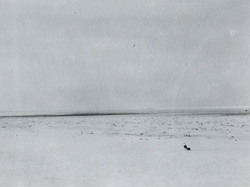
Historic Feature: The Dark Side of Bunnies
Although rabbits may be cute and fuzzy, they reproduce quickly, and like many rodents when left unchecked by predators, they breed and eat themselves into local extinction. Such was the case on Laysan Island at the beginning of the 20th Century. Max Schelmmer, known as the "King of Laysan" had introduced rabbits to the isolated island as a potential source of food, and as amusement for his children while he was overseeing guano extraction activities. When Schlemmer was indicted for poaching of bird feathers, and other dealings with Japanese feather hunters, he did not return to the island, and the rabbit population exploded. By 1918 the rabbits had eaten nearly everything on the island and only a few hundred rabbits remained. Over the course of 20 years the rabbits wiped out 26 species of plants and the once abundant Laysan Millerbird, which became extinct around this time. By 1923 Laysan had become a wasteland, and only when a biological "swat" team was brought to the island with the Tanager expedition the same year was Laysan rid of the rabbit scourge. (Source: "Isles of Refuge" by Mark J. Rauzon)

